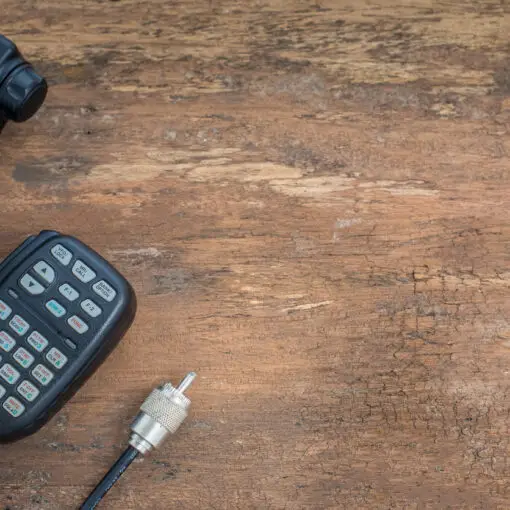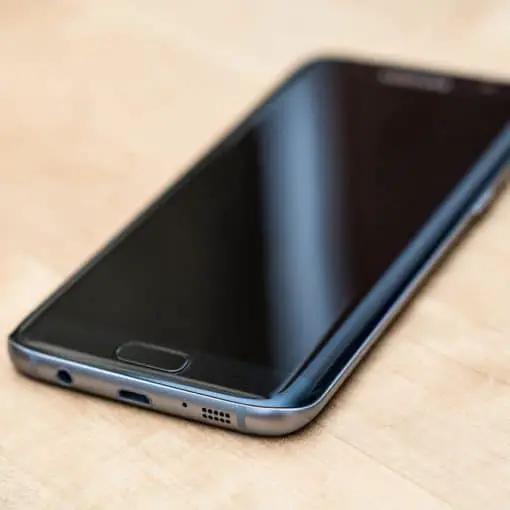Ham radios have a long history of bringing together engineers, communications experts, and your average everyday American. Yet, as the years have gone by, ham radio has seemingly fallen to the wayside. Or has it? Although it’s not as commonly used nowadays, ham radio is still a favorite form of communication for many preppers, enthusiasts, and long-haul drivers.
Ham radios hit their peak in the mid-1970s but were soon dethroned by cell phones and other forms of communication. Nonetheless, ham radios are still an essential form of communication and are quickly making a comeback. Today, more than 750,000 Americans own a ham radio, up 60% since the mid-1980s.
Let’s explore the history of the ham radio and trace its rise, fall, and recent reemergence. If you’re eager to get your own ham radio, we’ll also share some tips on where to start.
What is a Ham Radio?
A ham radio, or amateur radio, is a type of amateur broadcasting device used to produce a discrete range of radio frequencies. These frequencies are picked up and deciphered by other radio equipment, sharing information and communication across local and more distant areas.
Ham radios allow for non-commercial communication, including private conversations, radiosport, and emergency broadcasts. Ham radio operators are regulated and authorized by the United States Federal Communications Commission and restricted to specific radio frequencies.
Today, most ham radio operators fall into three camps—truck drivers, hobbyist radio enthusiasts, and preppers. Regardless of who you are, though, ham radio is an avenue towards an interesting, educational, and tight-knit community of like-minded individuals. It’s fun, social, and can even help save lives in emergencies.
Where Did Ham Radios Come From?
Ham radios are nothing new. They date back more than 100 years to the early days of radio and telecommunications when amateur operators were mocked for their heavy-handed Morse code. Because they struggled to type the codes out with finesse, they were mocked as “ham-fisted” radio operators.
As radio communications advanced past standard brass key Morse code, amateurs embraced the moniker and dubbed themselves ham radio operators. By the mid-20th century, it had lost its pejorative undertones and became a standard part of the English language. Today, ham radio refers to specific radio frequencies used by non-commercial operators.
Modern Uses of Ham Radio
Compared to cell phones, ham radio is obviously less popular but that doesn’t mean it’s disappearing entirely. In fact, there are more ham radios in America today than there were in the mid-1980s, up 60% to roughly 750,000 operators nationwide. You probably just don’t realize how ham radio plays a role in your everyday life.
The most obvious modern use of ham radio is by long-haul trucker drivers. Because truck drivers often cover incredible distances, they have to stay in touch with each other even if they’re out of cell range. Without ham radio, truck drivers wouldn’t be able to safely traverse the vast empty spaces of America. So, thank ham radio the next time you bite into an apple or steak.
Ham radio is also responsible for saving lives. When natural disasters strike, cell towers are often the first to go out of service. Without a line of communication, many people wouldn’t be able to send out emergency broadcasts for help. For example, during Hurricane Katrina and the devastating 2013 floods in Colorado, ham radios helped local residents reach rescuers and coordinate missions.
Even at the most basic level, entire communities have sprung up around ham radio. Whether you live in the city or the countryside, you likely have a local community of ham radio enthusiasts talking and spreading information across the ham frequency bands. One community was even able to reach astronauts on the International Space Station.
How You Can Get Started with Ham Radio
Before you go out and buy a radio, understand that it takes a little know-how to operate ham frequencies. You’ll first have to pass the licensure test and get authorization from the United States Federal Communications Commission. However, learning the requirements isn’t difficult and can be done by anyone—regardless of their citizenship—unless they represent a foreign government.
Ham radio licenses are valid for one decade, starting from the date of issuance. At the end of that 10-year period, you can renew your license online. There are currently three classes of ham radio licenses:
- Technician Class – The first-class license is given after an applicant passes a 35-question examination. The examination includes written and multiple-choice questions. The technician class license grants full operating privileges on ham radio bands above 30 MHz and limited access to high-frequency bands ranging from 3-30 MHz.
- General Class – The second-class license is awarded after the applicant passes the Technician class test and a second 35-question multiple-choice test. General class operators can access portions of every ham frequency band, as well as 84% of all high-frequency ham bands.
- Amateur Extra Class – The highest-class license in the US is awarded to applicants who pass both the technician and general class tests, as well as a third 50-question multiple-choice test. Amateur extra operators can access all ham bandwidths in the United States.
After getting your operator’s license you can then invest in a radio. There are a lot of quality used radios out there so don’t hesitate to shop around. Speak with local radio enthusiasts to find a range of options. Many beginner ham operators look for 100-watt high-frequency transceivers with built-in antennae tuners.
Additionally, you may need an external DC power supply if your radio can’t operate from a direct AC current. If you want to try your hand at Morse code, you can add a paddle or straight key to your radio system. For digital modes, you’ll have to invest in a sound card data interface, which can be expensive so we recommend starting with a basic setup.
Conclusion
Ham radio might not be as popular as cell phones but it’s certainly not disappearing any time soon. There are more ham operators today than there were 40 years ago and for good reason—it’s reliable, travels long distances, and comes in handy in an emergency. Get your license today and join the growing ham radio community!
References
http://www.arrl.org/ham-radio-licenses





